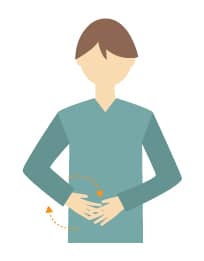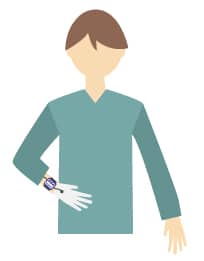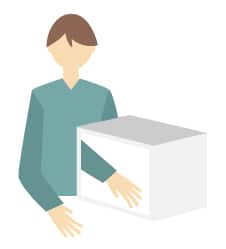Important Facts Of The First Stage Of Stroke Recovery


Every stroke is different, and every patient's stroke recovery experience is, too. Just as your symptoms depend on the severity of the stroke and treatment you received, your ability to regain certain functions and work toward recovery will also depend on a variety of different physical factors. However, it helps to know a little more about what to expect in the days and weeks ahead.
You've learned about the different stages of stroke recovery, but in order to simplify this experience and improve recovery odds, it's important to understand more about each stage. If a patient or loved one has recently experienced a stroke and lost motor control on one side of their body, they're probably in Stage 1 of their recovery process.
But what exactly does "Stage 1" mean, and how can patients and their caregivers navigate this first chapter of the journey toward recovery? Let's start by breaking down the nature of this first stage. After you understand the basics of your Stage 1 progress, start applying some of the most helpful recovery techniques to reach the second stage.
What is Stage 1 of Stroke Recovery?
Stroke involves the deprivation of oxygen to the brain. This damage usually occurs in a specific region of the brain, and if oxygen is not restored quickly enough, it may permanently kill or damage brain cells, resulting in varying levels of paralysis. Because of the way the brain interacts with nerves and muscles, damage on the left side of the brain can result in paralysis on the right side of the body, and vice versa.

After stroke, your brain isn't simply damaged; it's actively responding to this damage and attempting to protect itself from further trauma. This response may evolve throughout the stages of stroke, but it usually starts with flaccid paralysis.
Flaccid Paralysis
Stage 1 actually represents this initial period of shock immediately after stroke. Flaccid paralysis, a medical term for complete lack of voluntary movement, often sets in during Stage 1. This paralysis is caused by nerve damage that prevents the muscles from receiving appropriate signals from the brain, whether or not the brain is still capable of moving those muscles.
When a stroke survivor is in this early state of flaccid paralysis, they cannot initiate any muscle movements on the affected side of their body. If this continues for long enough without intervention or physical therapy, the unused muscles become much weaker, and begin to atrophy. Simply put, muscles need to be used in order to retain their tone and definition, and flaccid paralysis prevents muscles from doing this important work.

Hypotonia
Hypotonia is the medical term for this low muscle definition, which causes weakness and numbness that seriously interferes with a patient’s quality of life. In addition to therapy exercises and treatments that reduce the severity of hypotonia, this Stage 1 condition also requires lifestyle modifications to protect the affected limbs from injury.
Hypotonia increases a patient's risk of injury and deterioration as they recover because they are not able to sense trauma or reposition their limbs themselves. Fortunately, their unaffected body parts can play a big role in recovery. Limbs affected by hypotonia may be moved and supported by the unaffected limbs or assistance devices, which may range from an arm support for your arm to a footrest for your wheelchair. This prevents limbs with hypotonia from getting injured.
Caregivers also serve an important role in helping patients to minimize injury risks and speed up the pace of healing during hypotonia. It's caused by serious sensory loss, so it can be severely debilitating for patients who are also dealing with the psychological trauma of stroke.
Stimulation of the affected muscles is one way to kick-start the body's healing process. For example, brushing the flaccid biceps or triceps gives sensory input that prompts natural responses from your body. It's important to understand all the exercises designed for minimizing complications and keeping patients comfortable after stroke.
What are the Best Treatments for Hypotonia and Flaccid Paralysis?
Though stroke does serious neurological damage, other healthy brain cells and muscles can help make up for some of this damage. In fact, the patient's own body is full of tools that reduce complications and increase their likelihood of entering new stages of recovery. It's never too early to start retraining the body and brain after stroke, even if patients are still experiencing flaccid paralysis and hypotonia.
Some of these exercises are particularly useful for patients who want to enter the next stage of recovery:
Supporting Affected Limbs with Unaffected Limbs

Because the muscles can't contract at all during flaccid paralysis, it can be helpful for recovery to use the working limbs to help support the flaccid ones. Doing passive exercises involving your stronger arm to produce the forces needed to move and manipulate the disabled arm will help prevent muscle shortening and joint stiffness. Having your stronger arm help your weaker arm with common activities such as pushing objects on a table or grasping a bottle, will help keep the arm moving and start the process toward retraining the arm to be back to normal.
Passive Range of Motion

Passive range of motion exercises involve using the strong arm or a caregiver's assistance to move the affected arm or leg through a series of movements to help prevent joint contractures and maintain joint flexibility. It’s important that patients do these exercises without pain. There are many different Flexion and Extension exercises you can do to help build arm recovery. Check out Physio Therapy Exercises for helpful how tos and pictures of passive range of motion exercises you can do.
Muscle Facilitation

Muscle facilitation includes techniques such as tapping, sensory electrical stimulation and quick stretches. Muscle facilitation, especially tapping, effectively stimulates the proprioceptive sense, muscle spindles, Golgi tendons, etc., and strengthens muscles in the affected parts. Specifically with Sensory Electrical Stimulation (SES), it is believed to enhance the neural plasticity and activate brain areas, helping with stroke recovery. Studies show that providing SES to an impaired nervous system can prime the cortex ultimately leading to improve neuroplasticity, motor recovery and function. Using a Sensory Electrical Stimulation tool like the SaeboStim Micro is perfect for stroke patient in stage 1 of stroke recovery suffering from flaccid paralysis in their hand and wrist.
Movement Exercises

Repeatedly using the arm to complete tasks is effective for recovery after a stroke. Doing basic exercises such as straighten a leg, moving a leg onto a bed, having a patient manipulate a cane up and down, rolling a ball backward and forward and sliding a hand across a table can all help functional context. Repetition is key for recovery much like practice is key for performance.
Mirror Box Therapy

A mirror box can help with neuroplastic changes to help with stroke recovery. In a mirror box, the patient places a good limb outside the box with a mirror, and the flaccid one into the box. The patient then looks into the mirror on the side with the good limb and makes "mirror symmetric" movements. It has been suggested that visualizing and undertaking symmetrical, bilateral movements, like this, post-stroke enhances neuroplastic changes within the brain. Through the use of this simulated visual feedback, it becomes more possible for the patient to move the stroke-affected limb, and possibly unclench it from potentially painful positions.
Mental Visualization

Like the mirror box, mental visualization can also help with neuroplasticity. Even as the patient experiences lack of voluntary muscle movement, they can still imagine these movements. Mental rehearsal and visualization of movement can produce similar effects as practicing the actual movements. Imagining hand movements can stimulate restitution and redistribution of brain activity, which accompanies recovery in overall hand function.
Getting Over The Hump Of Stage 1 Of Stroke Recovery
In stage 1 of stroke recovery, a patient is in an initial period of shock and flaccid paralysis and hypotonia is very common. Movement may be very hard and painful during this stage. The best treatment you can do for are some of these treatments but take them slowly. Most stroke treatments require some basic supplies and the help of therapists or caregivers, so make sure you understand the best exercises and supplies for each stage of the stroke recovery process. With the right preparation and focus, Stage Two of the the Brunnstrom Approach will be that much easier to graduate to.
____________________________________________
Whether you are a caregiver, occupational therapist or even a stroke survivor yourself, Saebo provides stroke survivors young and old with access to transformative, life-changing products. We pride ourselves on providing affordable, easily accessible, and cutting-edge solutions to people suffering from impaired mobility and function. We have several products to help with the stroke recovery and rehabilitation process. From the SaeboFlex, which allows clients to incorporate their hand functionally in therapy or at home, to the SaeboMAS, an unweighting device used to assist the arm during daily living tasks and exercise training, we are commitment to helping create innovative products for stroke recovery. Check out all of our product offerings or let us help you find which product is right for you.
All content provided on this blog is for informational purposes only and is not intended to be a substitute for professional medical advice, diagnosis, or treatment. Always seek the advice of your physician or other qualified health provider with any questions you may have regarding a medical condition. If you think you may have a medical emergency, call your doctor or 911 immediately. Reliance on any information provided by the Saebo website is solely at your own risk.
All content provided on this blog is for informational purposes only and is not intended to be a substitute for professional medical advice, diagnosis, or treatment. Always seek the advice of your physician or other qualified health providers with any questions you may have regarding a medical condition. If you think you may have a medical emergency, call your doctor or 911 immediately. Reliance on any information provided by the Saebo website is solely at your own risk.



